Small overlap gap: Vehicles with good driver protection may leave passengers at risk
June 23, 2016
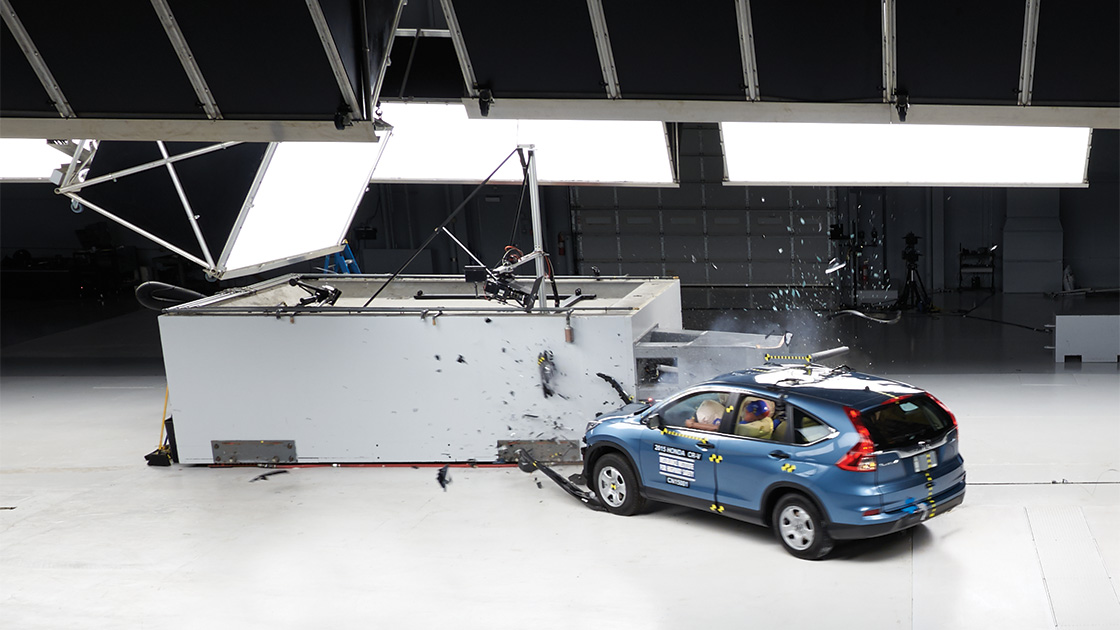
Drivers of vehicles with good small overlap front ratings from IIHS can expect to be protected well in a frontal crash involving the left corner of the vehicle. But how would the passengers sitting next to them fare in a right-side small overlap crash? A new study shows that good protection doesn't always extend across the front seat.
The Institute conducted 40 mph passenger-side small overlap tests on seven small SUVs with good driver-side small overlap ratings. Only one of the vehicles, the 2016 Hyundai Tucson, performed at a level corresponding to a good rating, and the others ran the gamut from poor to acceptable.
The results have prompted IIHS to consider instituting a passenger- side rating as part of its Top Safety Pick criteria.
"This is an important aspect of occupant protection that needs more attention," says Becky Mueller, an IIHS senior research engineer and the lead author of the study. "More than 1,600 right-front passengers died in frontal crashes in 2014."
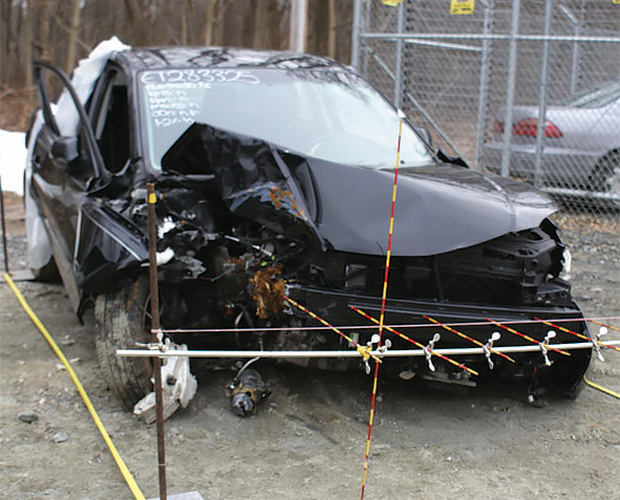
Real-world passenger-side small overlap crash: This 2008 Mazda 3 went off a curvy two-lane road after dark in heavy rain and crashed into a tree. A 16-year-old girl was sitting in the front passenger seat. Her femur, tibia, jaw and nose were broken, and she was hospitalized for five days.
IIHS introduced the small overlap test in 2012, following the success of the moderate overlap front test in spurring automakers to make improvements. (Most models have earned good moderate overlap ratings for more than a decade, and it's been more than four years since a vehicle earned anything less than good.)
While the moderate overlap test involves 40 percent of the width of the vehicle, the small overlap test involves just 25 percent. It is designed to replicate what happens when the front corner of a vehicle collides with another vehicle or an object like a tree or utility pole.
Small overlap crashes pose a challenge because they bypass a typical vehicle's main front structure. Since the test was introduced, 13 manufacturers have made structural changes to 97 vehicles. Of these, nearly three-quarters earned a good rating after the changes.
IIHS conducts its tests for frontal ratings with a driver dummy and with the barrier overlapping the driver side. The reason is simple: Every vehicle on the road has a driver, but there isn't always a passenger riding along.
"It's not surprising that automakers would focus their initial efforts to improve small overlap protection on the side of the vehicle that we conduct the tests on," says David Zuby, IIHS executive vice president and chief research officer. "In fact, we encouraged them to do that in the short term if it meant they could quickly make driver-side improvements to more vehicles. As time goes by, though, we would hope they ensure similar levels of protection on both sides."
The recent passenger-side tests show how big the differences can be. In this group of small SUVs, most didn't perform as well when they were crashed into a barrier on the right side instead of the left. That was even true of models that appeared symmetrical after removing bumper covers and other external components.
"When structural improvements are visible only on the driver- side, there are large differences in performance," Mueller says. "But the inverse is not true. Some vehicle structures look the same on both sides, but they don't perform the same. That's why we can't rely on visual analysis but need to monitor this issue and possibly begin rating vehicles for passenger-side protection."
The 2015 Toyota RAV4 and the 2014 Nissan Rogue were the only vehicles to appear asymmetrical. In the passenger-side test, the RAV4 was the worst performer. If the Institute issued ratings for passenger-side protection, the RAV4 would earn a poor rating. The Rogue would earn a marginal.
These two vehicles had the highest amount of passenger-side intrusion. Intrusion measures are important because they indicate how well the structure held up; the greater the amount of intrusion, the higher the likelihood of serious injuries.
Maximum intrusion in the passenger-side test was 13 inches more than in the driver-side test for the RAV4 and 10 inches more for the Rogue. The Rogue's door hinge pillar tore off completely, and the RAV4's door opened. In a real crash, an open door would leave the occupant at risk for ejection.
Two vehicles that appeared symmetrical, the 2014 Subaru Forester and the 2015 Mazda CX-5, also had substantially more intrusion in the passenger-side test than in the driver-side test.
Earlier research by Mueller into how manufacturers improve vehicle structure for small overlap protection showed that the most common change is to strengthen the occupant compartment. To achieve this, manufacturers might use a different type of material or add a few millimeters of thickness — changes that can't be discerned from a visual examination. It's likely these types of modifications were made to the Forester and CX-5, but only on the driver side.
The other three vehicles tested had relatively similar structural performance on both sides of the vehicle.
The 2015 Buick Encore's structural performance was virtually identical on both sides of the vehicle, but it would receive an acceptable overall rating in the passenger-side test because the driver dummy's head slid between the driver and passenger front airbags, putting it at risk of hitting the dash.
The Tucson would receive a good rating for passenger-side small overlap protection, though its structural rating would be acceptable instead of good, as it is in the driver-side test. The 2015 Honda CR-V also had slightly more intrusion on the passenger side than on the driver side and would receive an acceptable rating overall.
The differences between driver-side and passenger-side performance in the Tucson and the CR-V are small enough that they could be a result of normal variability in test results.
Another factor is that vehicles are to a certain extent inherently asymmetrical. For example, structures to secure the steering wheel and pedals may provide additional bracing around the driver-side toepan, which prevents some intrusion. That same toepan area on the passenger side without those structures is where the highest intrusion measures occurred on the passenger side of the CR-V and Tucson.
How structure varies within the same vehicle
When engineers removed bumper covers of SUVs being tested for passenger-side small overlap protection, some had structural differences between the right and left sides. Others looked symmetrical but didn't always perform similarly.
2016 Hyundai Tucson
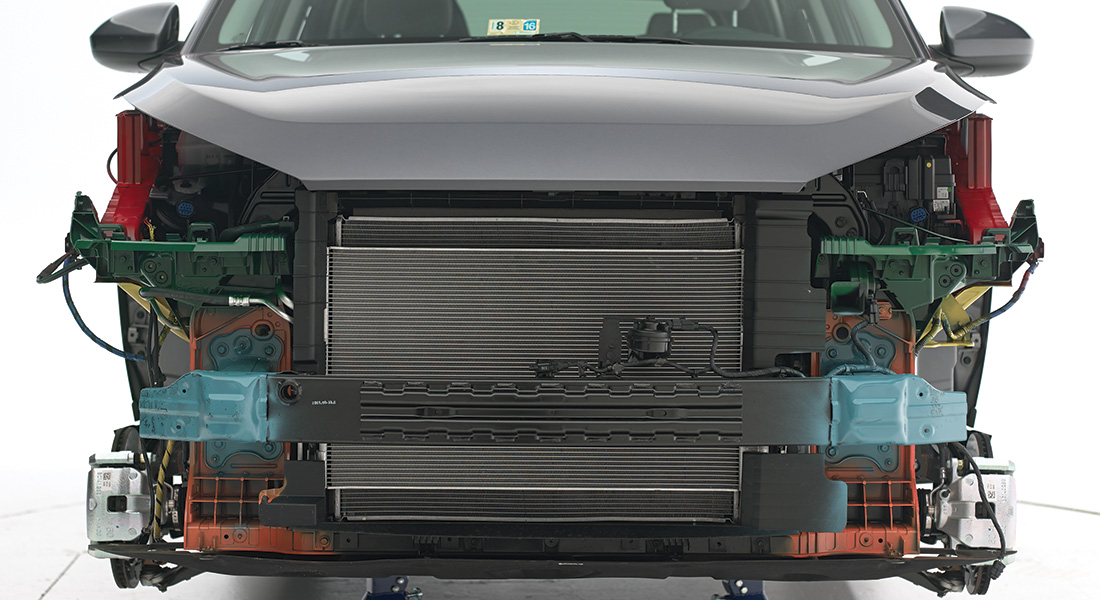
Symmetrical appearance, similar performance
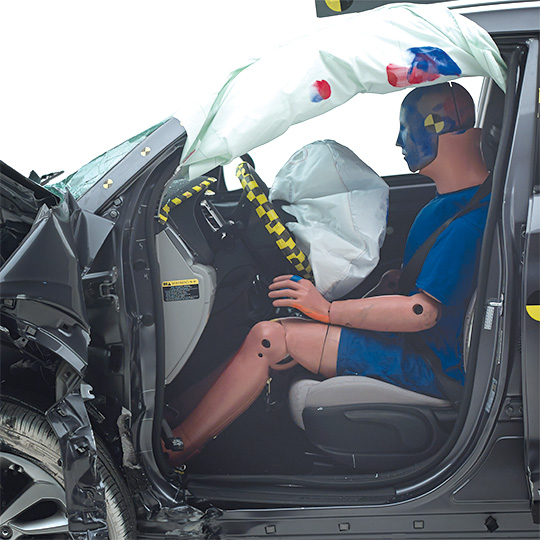
Driver-side small overlap test: Good
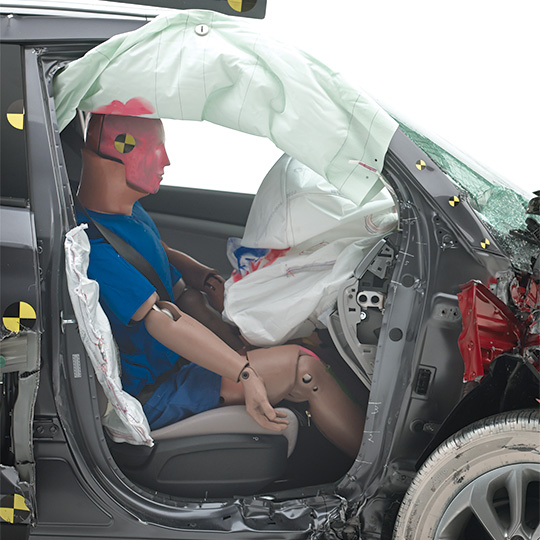
Passenger-side small overlap test: Good
2015 Toyota RAV4
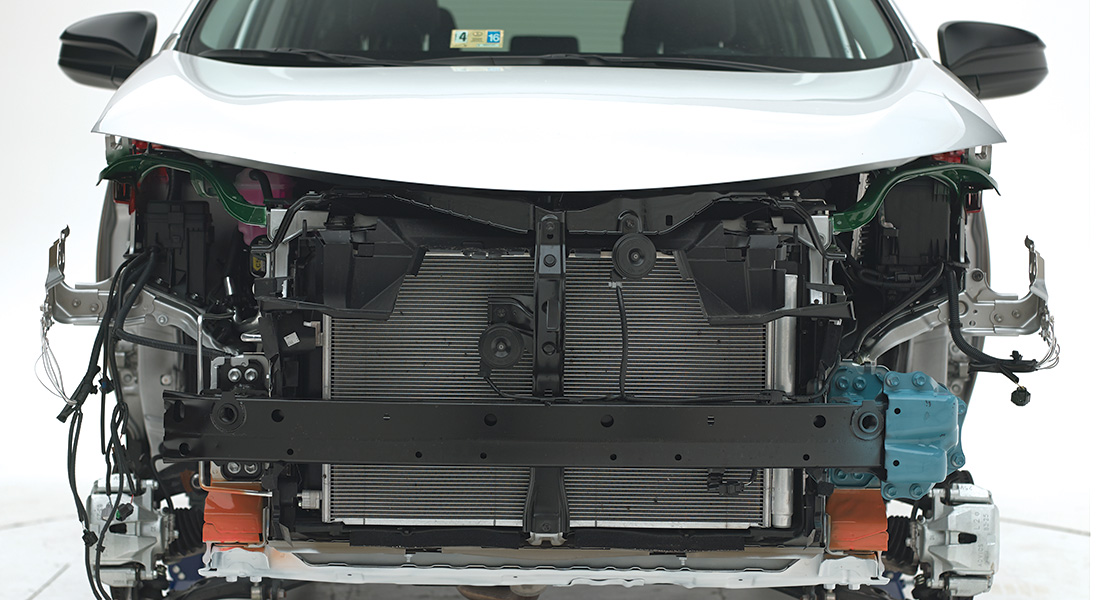
Asymmetrical appearance, poor passenger-side performance
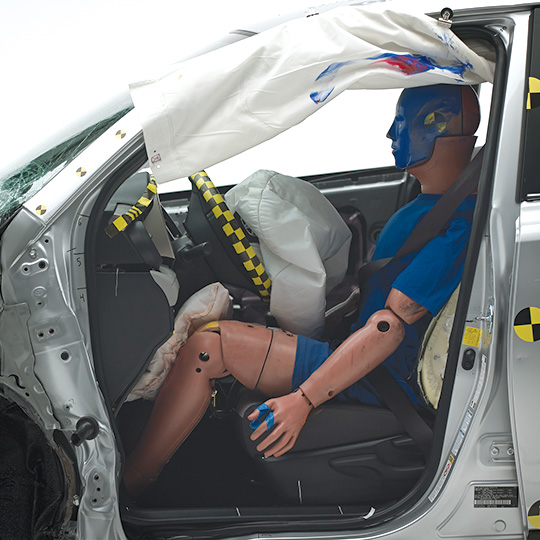
Driver-side small overlap test: Good
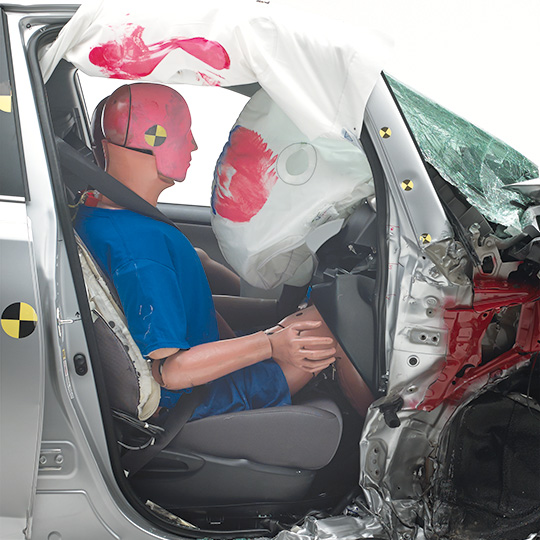
Passenger-side small overlap test: Poor
2014 Subaru Forester
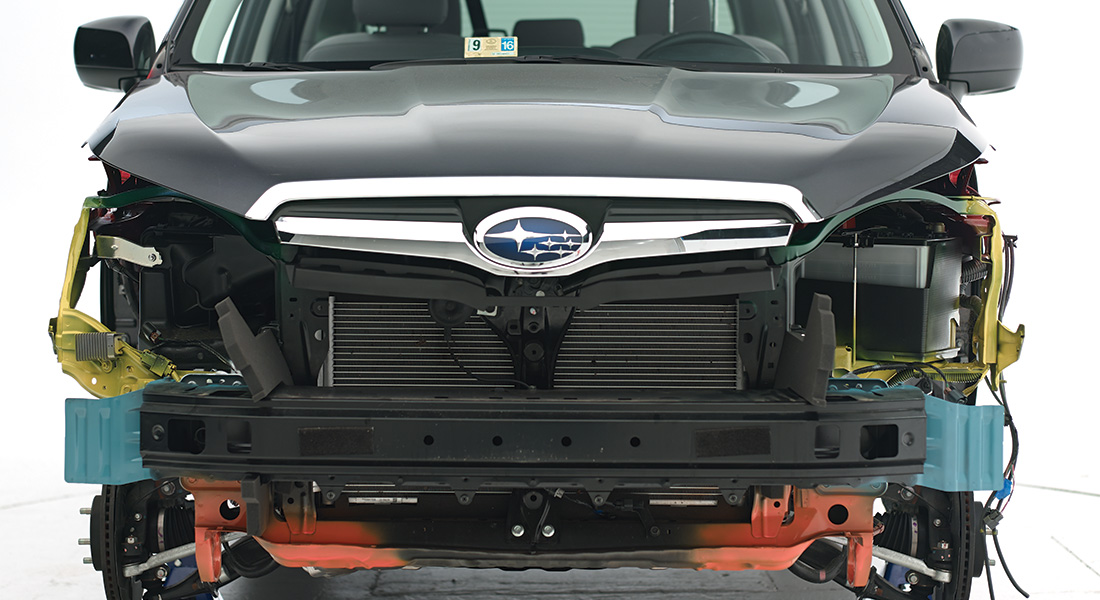
Symmetrical appearance, marginal passenger-side performance
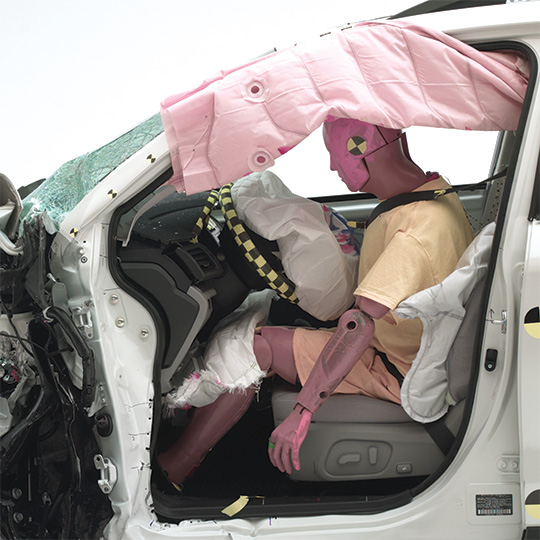
Driver-side small overlap test: Good
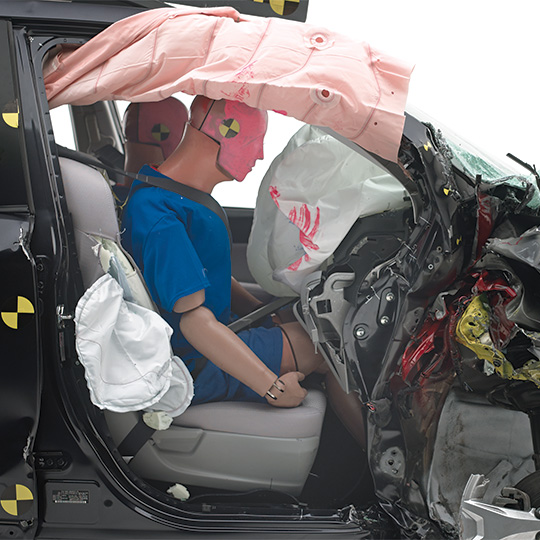
Passenger-side small overlap test: Marginal
In addition to the seven passenger-side small overlap tests, Institute engineers conducted two passenger-side moderate overlap tests to make sure there weren't any differences in performance in that type of crash. One visually symmetrical vehicle, the CR-V, and one asymmetrical vehicle, the RAV4, were chosen for these tests. There was little difference from the driver-side moderate overlap tests, and both vehicles would receive a good passenger-side moderate overlap rating.
"We conducted the moderate overlap tests as a spot check, and we weren't surprised that both vehicles performed well," Mueller says. "Many of today's models are designed for the global market and are subject to driver-side moderate overlap tests in right-hand-drive countries. With small overlap, there isn't the same incentive for symmetrical design because we're the only organization conducting the test."
IIHS passenger-side small overlap ratings would remedy that situation. The Institute could start such a program next year and make it a requirement for one of its safety awards as early as 2018.
Small overlap front crash test ratings for small SUVs
| Driver-side overall rating | Provisional passenger-side overall rating | |
|---|---|---|
| 2016 Hyundai Tucson | G | G |
| 2015 Buick Encore | G | A |
| 2015 Honda CR-V | G | A |
| 2015 Mazda CX-5 | G | A |
| 2014 Nissan Rogue | G | M |
| 2014 Subaru Forester | G | M |
| 2015 Toyota RAV4 | G | P |
Key